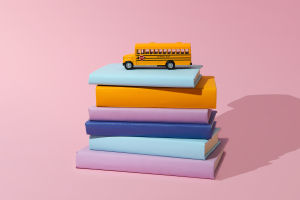Looking for a creative and fun activity that also supports your child’s development, Lykkers? Playing with building blocks might be just what you're searching for.
Let's explore how playing with building blocks can improve hand-eye coordination in children!
1. How Building Blocks Improve Hand-Eye Coordination
Playing with building blocks may look like a fun pastime, but it’s also a fantastic way to develop hand-eye coordination—a skill that is vital for everyday tasks.
Precise Movements
When children pick up a block, they need to carefully position it in their hands, align it with other blocks, and place it in just the right spot. Through repetition, kids learn to make more accurate and controlled movements, which strengthens their hand-eye coordination.
Problem-Solving
Building structures with blocks encourages children to plan their next move, whether they’re building a tower, a house, or something more abstract. It helps refine their motor planning—the ability to think ahead and decide how to carry out specific tasks.
2. Why Hand-Eye Coordination Matters
Here’s why it’s so crucial:
Fine Motor Skills: Hand-eye coordination is directly linked to fine motor skills, which involve the smaller muscles in the hands and fingers. By playing with blocks, children can enhance their fine motor control in a way that feels fun and engaging.
Academic Readiness: The ability to control the hand with precision and coordinate it with the eyes helps to set the foundation for future learning.
Sports and Physical Activity: As children grow, they’re learning to throw a ball, catch, or ride a bike, good coordination helps improve performance and builds confidence in physical activities.
3. Creative Ways to Play with Building Blocks
Here are some creative ideas to keep your little ones engaged while enhancing their motor skills:
Tower Challenge: This simple game requires careful attention and steady hand movements, helping kids improve both coordination and concentration.
Shape and Color Sorting: This activity not only enhances hand-eye coordination but also develops cognitive skills such as color recognition and sorting.
Building from Instructions: Following step-by-step guidance helps them practice spatial awareness and planning, both of which contribute to better coordination.
4. Parental Tips for Maximizing Block Play
As parents, it’s essential to know how to make block play as beneficial as possible for your child’s development.
Provide a Variety of Blocks: Offer different types of blocks (wooden, plastic, foam) in various sizes and shapes.
Be Patient and Encouraging: As your child experiments with stacking and building, they may experience frustration if their structure falls apart.
Incorporate Play into Daily Routine: Incorporate block play into everyday routines, such as building while waiting for dinner or using blocks to reenact a story.
Limit Screen Time: While digital games can offer some educational value, physical play with building blocks is crucial for developing tangible motor skills.
5. Long-Term Benefits of Block Play
Beyond hand-eye coordination, block play offers numerous benefits for a child’s overall development.
Improved Concentration: Building with blocks requires sustained attention, which can help children develop better concentration and focus. T
Enhanced Creativity: Children can create anything they dream of, from castles to animals, encouraging creativity and independent thinking.
Spatial Awareness: Block play teaches children about spatial relationships, such as understanding how objects fit together or how to balance structures.
Encouraging block play and guiding child with fun challenges will help lay the foundation for their academic and physical success. So grab some blocks and start building a stronger, more coordinated future for your little one today!


